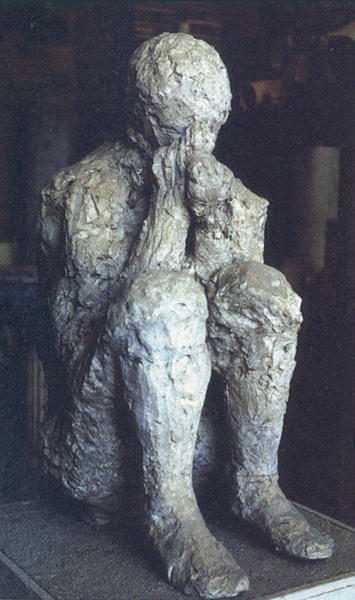Image Details

The Art Archive/Dagli Orti
After Vesuvius exploded, pumice rained down on Pompeii, followed by a surge of superheated gas. Herculaneum was buried under a flow of low-temperature lava and mud.
The volcanic debris eventually hardened around Vesuvius’s victims, creating stone “molds.” Scientists are able to create eerie “living” statues by injecting plaster or silicone into these molds, creating an image of victims in the terrifying moments of death—when all life was wiped out in Pompeii and Herculaneum. The crouching muleteer (shown here) was found next to his mule under the portico of Pompeii’s large palaestra, an athletic ground surrounded on three sides by a colonnade.
